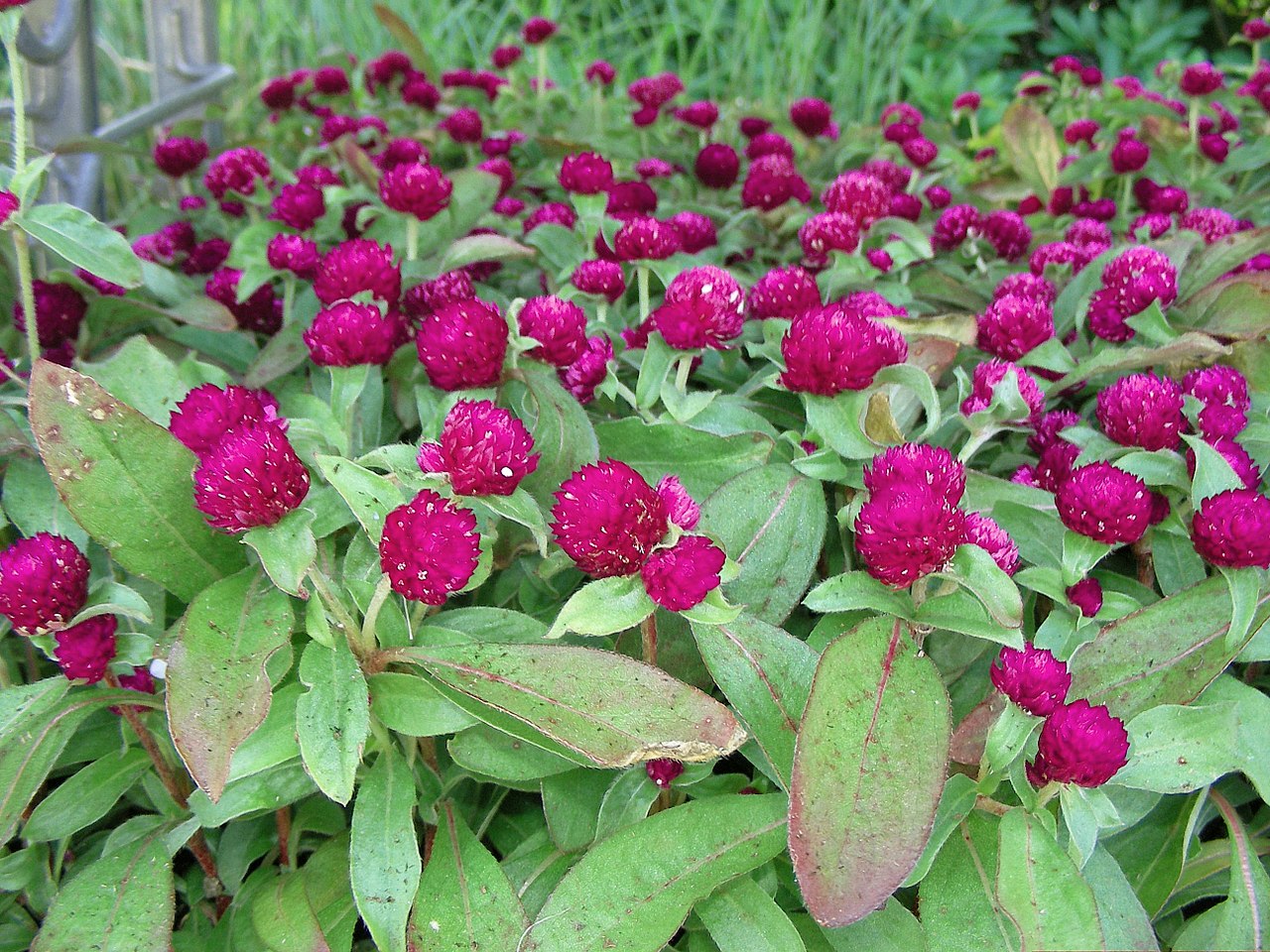Gomphrena globosa

|
|
Gomphrena globosa Common Names: Globe Amaranth, Bachelors Button,
Makhmali Scientific
Classification Kingdom: Plantae Clade: Tracheophytes Clade: Angiosperms Clade: Eudicots Order: Caryophyllales Family: Amaranthaceae Genus: Gomphrena Species: G. globosa Synonyms: Gomphrena globosa var.
globosa, Gomphrena globosa var.
hirsuta Moq., Gomphrena rubra Moq., Xeraea globosa Kuntze Morphological Description Gomphrena globosa is a tropical annual plant typically growing to 15–60 cm
(6–24 inches) in height, though cultivated varieties may reach up to 90 cm. Its
key morphological features include: · Stems: Erect, branched, often hairy, with a bushy growth habit;
stems are jointed and stiff, turning woody at the base with age. · Leaves: Opposite, lanceolate to ovate (4–10 cm long, 2–5 cm wide),
covered with fine, soft hairs, especially when young, giving a slightly fuzzy
appearance; margins entire. · Flowers: Globular inflorescences (2–4 cm in diameter), clover-like,
composed of papery bracts in vibrant shades of purple, pink, white, red, or
yellow; true flowers are small, tubular, and inconspicuous within the bracts. · Fruit: Small, dry utricles containing single seeds, enclosed within
the persistent bracts, aiding wind dispersal. The plant’s carbon
fixation follows the C4 pathway, enhancing its resilience in hot, dry
conditions (Roriz et al., 2014). Distribution and Habitat Gomphrena globosa is native to Central America, with a natural range extending
from southern Mexico through Panama and Guatemala to northern South America
(e.g., Brazil). It has been widely naturalized across: · Africa: Nigeria, Ghana, South Africa (annual rainfall 800–2,000 mm). · Asia: India, China, Philippines, Malaysia (altitude 0–1,500 m). · North America: Southern United States (e.g., Texas, Florida). It thrives in tropical
and subtropical climates, preferring full sun and well-drained, sandy or loamy
soils (pH 6.0–7.5). Its drought and heat tolerance make it a popular choice for
cultivation in diverse regions (Esmat & Mittapally, 2020). Ethnopharmacology Gomphrena globosa is widely utilized in traditional medicine across multiple
cultures, with studies validating several applications: The leaves and flowers of G. globosa are
employed in folk medicine to address ailments such as hypertension, respiratory
issues (including coughs, bronchitis, and hoarseness), diabetes, kidney
disorders, and microbial infections. In traditional Chinese medicine, dried G. globosa flowers are incorporated into
cough syrups to treat respiratory system diseases. Phytochemical analyses have
revealed that the plant contains bioactive compounds like flavonoids, phenolic
acids, betacyanins, and terpenoids, which contribute to its antioxidant,
antibacterial, antifungal, and anti-inflammatory activities. · Respiratory Conditions: Flower infusions treat asthma, bronchitis,
and coughs in Chinese and Malaysian folk medicine. · Antihypertensive: Used in Trinidad and Tobago to lower blood
pressure. Lans (2006) reported its traditional use, while Silva et al. (2012)
showed that flower extracts reduce systolic pressure by 15% in hypertensive
rats due to flavonoid content. · Antimicrobial: In India, whole-plant extracts combat infections. Tang et
al. (2022) confirmed that Extracts from G.
globosa flowers have shown antibacterial activity against various bacteria,
including Escherichia coli, Listeria monocytogenes, Bacillus cereus, and
Salmonella typhimurium. · Diuretic: Leaves and flowers are used in Brazil for oliguria. · Antioxidant: Tea from dried flowers detoxifies the body in Tamil Nadu.
Roriz et al. (2014) demonstrated high DPPH radical scavenging activity (IC₅₀
12.5 μg/ml), attributed to betalains and flavonoids. ⚠ Toxicity Profile: No significant toxicity is reported for Gomphrena globosa in traditional doses. High doses of flower
extracts (>2,000 mg/kg) in mice showed mild gastrointestinal distress but no
lethality. Allergic reactions to pollen or bracts are rare but possible (Silva
et al., 2012). Additional Uses · Ornamental: Valued for its vibrant, long-lasting blooms, used in dried
arrangements and landscaping; bracts retain color for years (Jiang et al.,
2011). · Culinary: Flowers are brewed as herbal tea in China and used as edible
decorations in South America. · Industrial: Betacyanins serve as natural food dyes (pH stable 3–7),
offering red-violet hues for food and cosmetics (Esmat & Mittapally, 2020). References
External Links More Pictures |
|
| Compounds of Gomphrena globosa | |
| References |